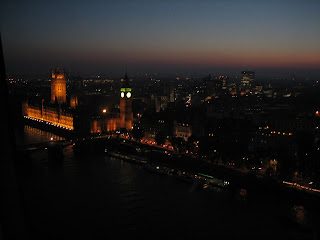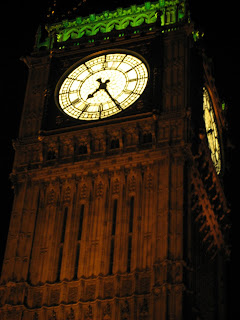Most of the classes in the program have trips associated with them. Over the past weekend, IES planned a trip to Belgium for my history class. While not compulsory, it was a great opportunity, and most of the students in the program participated in it. Over two days, we traveled by coach bus (over the Channel on a ferry and through France), visited a WWI museum, attended the Last Post at the Menin Gate, walked the ramparts of the original city, visited three war cemetaries, walked through reconstructions of the trenches, and enjoyed the chocolate, waffles, and beer. We traveled to Ypres (Ieper, also pronounced "Wipers" by the British troops during the war). The trenches along the Western Front surrounded Ypres on 3 sides, making it a target in the crossfire from nearly all angles. As a result, the city was completely destroyed during the war. In the decades after the war, the people of the city rebuilt it stone-for-stone, brick-for-brick. The first picture is of the market in the middle of the square.

The Menin Gate was built as a memorial to all the soldiers who were not found. The soil in Belgium is a thick clay, and it was flooded during the war to halt the German's advance. As a result, thousands and thousands of men were lost beneath it. Names are carved over all the walls, inside and out, of the gate...and it is one of three memorials to the missing. There were hundreds of thousands of men lost in this war, and bodies are still being uncovered in the land. In area of land fought over, an average of 30 men died per square meter.


Below is a medical center not far from the front. The next couple of photos are of the trenches that have been reconstructed.



Tyne Cot Cemetery. The spires from Ypres can be faintly seen in the horizon, slightly to the left of the middle (only a few miles from the cemetery/battlefield). This cemetery still has three stone structures that housed the machine guns.


In Flanders Fields
In Flanders fields the poppies blow
Between the crosses, row on row,
That mark our place; and in the sky
The larks, still bravely singing, fly
Scarce heard amid the guns below.
We are the Dead. Short days ago
We lived, felt dawn, saw sunset glow
Loved and were loved, and now we lie
in Flanders fields
Take up our quarrel with the foe:
To you from failing hands we throw
The torch: be yours to hold it high,
If ye break faith with us who die.
We shall not sleep, though poppies grow
In Flanders fields.
Major John McCrae
The most haunting of all the information that we learned was of the firing squads. To make examples of deserters, British officials would take a man who had been sentenced to death and select 12 men of that man's unit to form a firing squad. That man would then be tied to a post and blindfolded. The firing squad would then enter the courtyard and pick up their already-loaded guns, one of which would be loaded with a blank. At the signal, the squad would fire upon the target pinned to the doomed man's chest. In one case, the man's brother was assigned to the firing squad (the officers soon realized and removed him, but it is still a very haunting tale). These examples were distributed among the army, but not the public. Only in 1989 was this information released to the public. My history tutor (shown in the picture below) and a colleague spent 11 years tracking down the names of the doomed men, and only two years ago did the British Government issue apologies to their families. The poem, written by Rudyard Kipling, on the sign says:
The Coward
I could not look on Death,
which being known,
Men led him to me,
blindfolded and alone.





















































